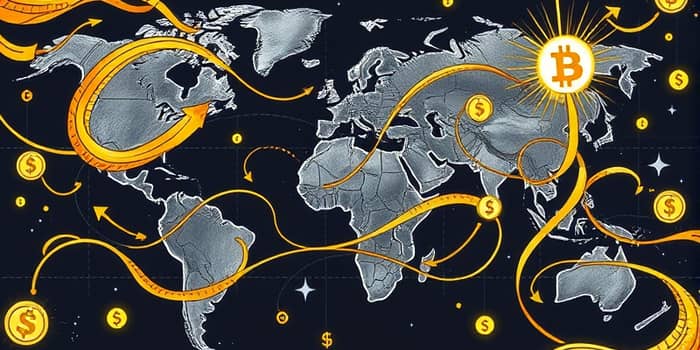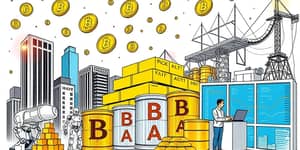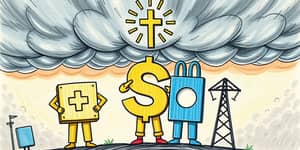
Interest rate gaps between countries have profound effects on where money moves, shaping global economies and financial stability.
At its core, an interest rate differential (IRD) is simply the difference between interest rates in two regions or instruments. When one nation’s central bank sets rates significantly higher than another’s, it creates a powerful incentive for capital to shift from low-yield to high-yield markets. This mechanism drives much of today’s forex carry trades, where investors borrow in low-rate currencies and invest in high-rate markets, seeking to profit from the gap.
As capital surges toward attractive yields, the recipient currency tends to appreciate, reinforcing the appeal of its assets. Conversely, currencies of low-rate countries may weaken as funds exit, creating a feedback loop impacting trade balances and inflation expectations.
Interest rate gaps serve as a magnet for hot money and short-term capital, which can swiftly amplify asset price movements. Short-term inflows boost equity and bond markets, lowering borrowing costs and fueling consumption. Yet, when the gap narrows or risk perceptions shift, sudden reversals and destabilizing outflows can trigger sharp currency slides and financial market turmoil.
Monetary policy, fiscal discipline, and exchange rate regimes jointly determine how enduring and stable these flows become. Countries sustaining high rates without credible policies risk attracting speculative influxes that may reverse as sentiment changes, undermining long-term growth.
Data from U.S. Treasury International Capital (TIC) reports highlight robust foreign appetite for U.S. assets in early 2025. In February, total net foreign inflows reached $284.7 billion, with $229.3 billion from private investors and $55.4 billion from official sources. Long-term security holdings rose by $142.7 billion, while banks’ dollar liabilities climbed $92.8 billion.
However, April 2025 saw net U.S. securities sales of –$50.6 billion, indicating sustained foreign purchasing. Over the preceding 12 months, gross U.S. sales and purchases have each totaled tens of trillions, reflecting constant shifts in global demand.
Emerging markets displayed contrasting flows. Q4 2024 marked the first net outflow of non-resident capital since Q1 2020. Meanwhile, residents in many EMs increased overseas portfolio acquisitions, particularly in China, where portfolio investment rebounded but direct investment dipped.
When yield differentials widen due to aggressive rate increases, capital roars toward higher returns. Yet, if inflation surges or growth falters, real yields may erode, prompting re-evaluation by international investors.
Large capital inflows can drive currency appreciation, pressuring exporters and widening current account deficits. Policymakers may intervene via foreign exchange operations or implement capital controls to moderate excessive volatility.
Maintaining a delicate balance between attracting stable, long-term investment and avoiding speculative surges poses a central challenge. Unsound macroeconomic policies paired with high rates can lead to bubbles in credit and asset markets, leaving economies vulnerable to sharp corrections.
Speculative inflows powered by IRDs played a starring role in many 1990s emerging market crises. Countries entering with incompatible fiscal and monetary stances saw rapid reversals as global sentiment soured, culminating in currency collapses and banking stress.
By contrast, sustained yield differentials backed by productivity gains and credible policy frameworks have financed infrastructure and industrial growth in several advanced economies, underlining that quality of fundamentals is paramount.
Carry trade strategies remain emblematic of IRD-driven flows. Investors borrow in currencies with ultra-low rates, such as the Japanese yen, and deploy proceeds into higher-yielding U.S. dollars or emerging market bonds.
Effective risk management requires close monitoring of central bank signals and global liquidity conditions. Derivative instruments can hedge FX exposures, but they add complexity and cost.
As we navigate 2025, divergence between advanced economy rates and EM policies is likely to persist. Central banks must weigh domestic goals—like taming inflation—against external pressures from volatile capital movements.
Authorities may deploy a toolkit combining:
Long-term stability hinges on aligning monetary and fiscal frameworks, fostering investor confidence in sustainable growth rather than fleeting yield chases.
Interest rate differentials remain a fundamental driver of global capital allocation. While they offer avenues for financing investment and achieving portfolio diversification, they also pose risks of volatility, currency misalignment, and policy trade-offs.
By understanding the interplay of rates, inflation, and risk perception, policymakers and investors can better navigate the ebb and flow of cross-border capital, promoting resilient growth and financial stability in an interconnected world.
References













